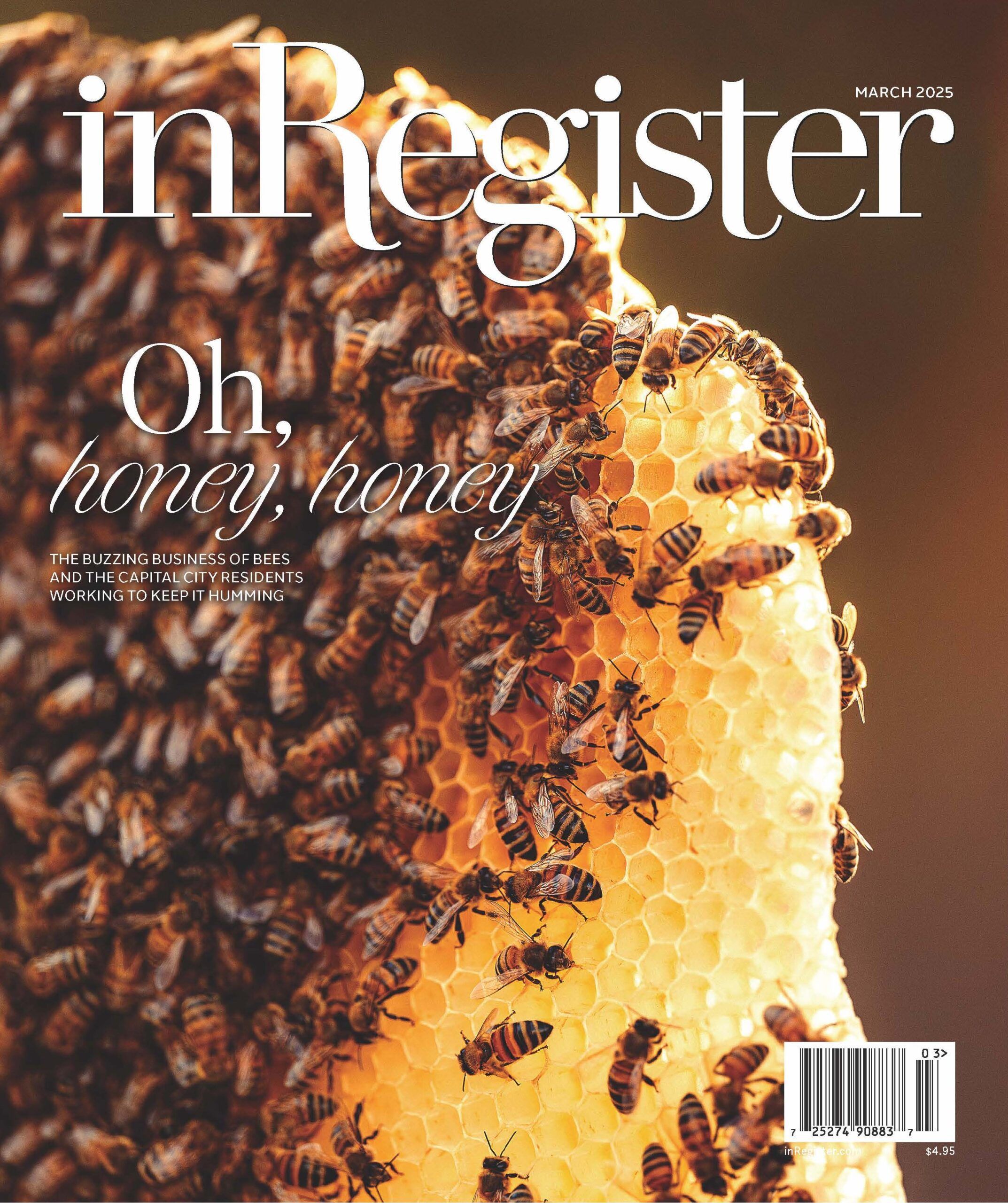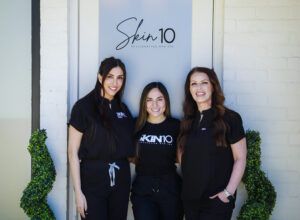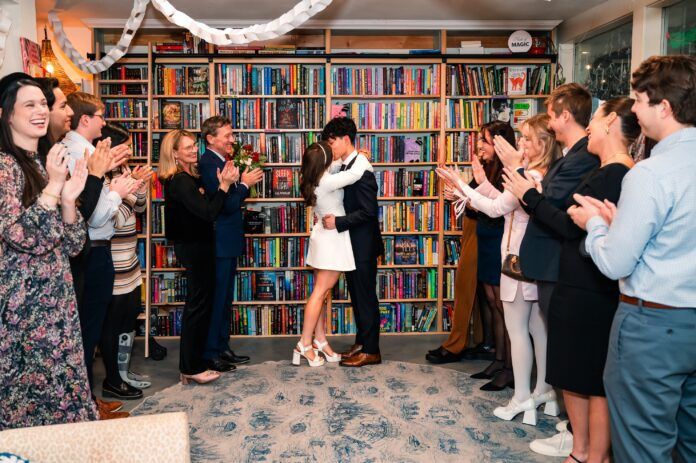Carnival in the capital – Louisiana politicos and patrons bring Mardi Gras to Washington, D.C., year after year
Like rare and dazzling jewels plucked from crowns and tossed onto a vast marble and granite expanse, Mardi Gras, Louisiana style, always splashes memorably into the corridors of power and politics in Washington, D.C.
It happens just one weekend a year. But the heart of this multiday carnival celebration beats all year long.
Many a business deal has been planted over a Mardi Gras luncheon on Capitol Hill. Many a friendship has taken root over a toast in the Washington Hilton.
Shreveport might seem like a long way from Interstate 10. But in Washington, residents from all the cities of Louisiana become sugar-sharing neighbors.
The ladies and gentlemen who go to Washington Mardi Gras a single time remember it well into the decades that follow.
Those who truck to the ball on a yearly basis, their bags straining to contain lavish crystal crowns, ropes of mirrored, enamel beads, designer gowns and krewe masks, name this event—possibly both the coldest and hottest Mardi Gras in the country—as a fixed facet in their social calendars.
2013 proves the importance of Washington Mardi Gras.
Even with the Super Bowl, being held the same weekend in New Orleans this year, few krewe regulars were willing to skip the Feb. 2 ball.
Many a flight to Louisiana lifted off in the early morning hours of Feb. 3 so that the dignitaries of Washington Mardi Gras could make kickoff. Others blew off the big game. After all, it’s Washington Mardi Gras.
What a weekend.
The city of Baton Rouge was the belle of this year’s festivities. The chairman, U.S. Rep. Bill Cassidy, as well as King Martin Svendson and Queen Laura Kelley are all residents of the Capital City.
“It has been an opportunity of a lifetime,” Kelley told inRegister the day before the ball. She’s the daughter of Nanette Noland and 19th Judicial District Judge Tim Kelley.
“I’m so honored to be selected to represent the great state of Louisiana and the Mystick Krewe of Louisianians during this event in our nation’s Capital.”
Baton Rouge Mayor Kip Holden was there, too, as lieutenant-at-large.
The ball’s theme: La Bonne Terre, in celebration of Louisiana’s abundant wildlife, fisheries, agriculture, natural resources, freshwater and forests.
“All the communities in the state come together,” says Ted Jones, a Baton Rouge attorney who is a senior lieutenant in the Mystick Krewe of Louisianians, the organizing body for Washington Mardi Gras.
“You have about 2,000 of the top economic interests in the state and political interests in the state, and then you have about 1,000 [from] bureaucracy.”
The first time Russell Mosely went to Washington Mardi Gras, he was young enough to squeeze through a crowd.
At 10 years old, he recalls, he tore through the ball with his siblings and cousins until he stopped short, marveling at the procession of princesses and festival queens from various Louisiana regions—areas that are cradled by the hairpin turns of rivers, ridged by fields or trees, and always rife with sweet soil that presses up strawberries, yams, watermelons and frogs.
Many of the queens bore emblems of fruits from home on those spangled crowns that rose from carefully coiffed cascades of hair.
“I got to see my grandfather in a big white suit with a huge plume on his head walking around with a mask on,” he says now, chuckling.
Mosely’s grandfather was U.S. Sen. Russell Long, who is fondly remembered for shaking up Washington Mardi Gras, among other things. “My grandfather had a childlike enthusiasm for it and took it to the next level,” Mosely says.
Washington Mardi Gras had taken place in some form since 1944, when a group of exiled bayou folks in the Louisiana State Society decided to celebrate by dressing up and throwing a Mardi Gras ball.
At that time, Ensign Hale Boggs came dressed like George Washington. Martha Washington was played by Miss Rupert Berry, a member of U.S. Rep. Charles McKenzie’s staff.
The event grew steadily in size and funding. In 1957, Long, chairman of the ball that year, proposed the event become backed by an actual, bona fide Louisiana krewe. Louisiana State Society’s members balked and voted 9-to-1 against the idea.
Long was not deterred. Thanks to his position as chairman, he muscled a “majority” of one, and the Mystick Krewe of Louisianans was born. Its creation opened the door to what has become a three-day-long party for members who carry on its traditions and grandeur.
The ball moved in 1977 from the Sheraton Park Hotel to its current location at the Washington Hilton. This, too, was a change that Long championed. Despite some members’ opposition, Long again used his position as chairman to push for a larger venue and won.
Today, the Hilton recognizes Washington Mardi Gras as one of the biggest events it hosts anywhere in the world.
Political forces and companies take over the suites at the hotel and host parties and luncheons that showcase all that Louisiana has to offer.
But the rules of any good party still obtain: No political hashing.
“At the Mardi Gras in Washington we don’t get into personalities,” says Ted Jones. “Those conflicts are strictly not a part of what we do. We don’t get in them, we don’t discuss them, we don’t take sides. The ball is for the general participation of our state.”
Carried away by the fun, the politicians often reveal a slightly less buttoned-down side of themselves. U.S. Sen. Mary Landrieu, for instance, has an annual karaoke party in her suite.
“It’s a marathon, I tell you,” Mosely says.
He still travels to the ball each year. Festival queens are still there, eternally young, like the crops they represent. All of the pageantry he remembers from his youth remains unchanged, too.
Now grown up, though, Mosely also counts the social event as one of the most vital strategic meetings he attends for his business all year. He is an attorney and real estate developer.
Politicians listen more easily at Washington Mardi Gras. There is a healthy mix of economic representatives from around the state. And later on, those powerbrokers can recall the folks they met at Washington Mardi Gras.
“Almost everyone I’ve met at Washington Mardi Gras, I’ve been able to pick up the phone and tell the assistant, ‘I met him at Washington Mardi Gras,’ and I get straight through,” Mosely says.
“There are some people we only see at Washington Mardi Gras every year,” says attorney Chris Jones, who makes the annual pilgrimage with his wife, Kelley. “You never know who you will see up there, and that is one of the fun parts of returning every year.”
When she was a girl, Michelle Forte LeBlanc was invited by her godfather, Lt. Gov. Bobby Freeman, to be a princess in the 1988 Washington Mardi Gras.
Looking back now on the experience, the owner of Fleet Feet Baton Rouge says it was hands down one of the highlights of her life.
“We didn’t get to meet the president or anything,” she says, flipping through snapshots, “but it was exciting.”
She beams, in one photo, from a platform of princesses and festival queens. It’s the era of big hair. The crowns are bigger.
“Look at me,” LeBlanc chuckles. “These dresses were made just for me.”
She recalls seeing the sites of Washington, D.C., giddy from the adventure but a bit exhausted and sore-footed, too.
The memories she made there, with her parents, Vincent and Flo Forte, she cherishes most of all. Both have since passed away. They had a ball, LeBlanc recalls.
“We were treated like royalty.”
1944
The first ball is a slightly spontaneous affair. Some attendees dress up as Founding Fathers.
1946
Felix “Dan” Broussard, as head of entertainment, suggests Washington Mardi Gras showcase the resources of Louisiana.
1948
Enter the festival queens. For the first time, six festival queens go to Washington, D.C., to represent Louisiana. The tradition carries on to this day.
1950
NBC News features the ball’s rehearsal.
1953
The Louisiana Society decides to elect a chairman to steer the ball. The chairman is selected by the society from the Louisiana Congressional delegation. (Today the chairman is selected by members of the Louisiana delegation from among themselves.) Walter Cronkite served as narrator and Vice President Richard Nixon presented the queen.
1957
“The Russell Long era” begins. The senator creates the Mystick Krewe of Louisianians and begins pushing the event to become bigger and better with more extravagant decorations and additional seating.
1977
The ball moves from the Sheraton Park Hotel to the Hilton, which can seat 2,500.
1981
Mystick Krewe of Louisianians incorporates as a nonprofit and becomes the official sponsor of the ball.











